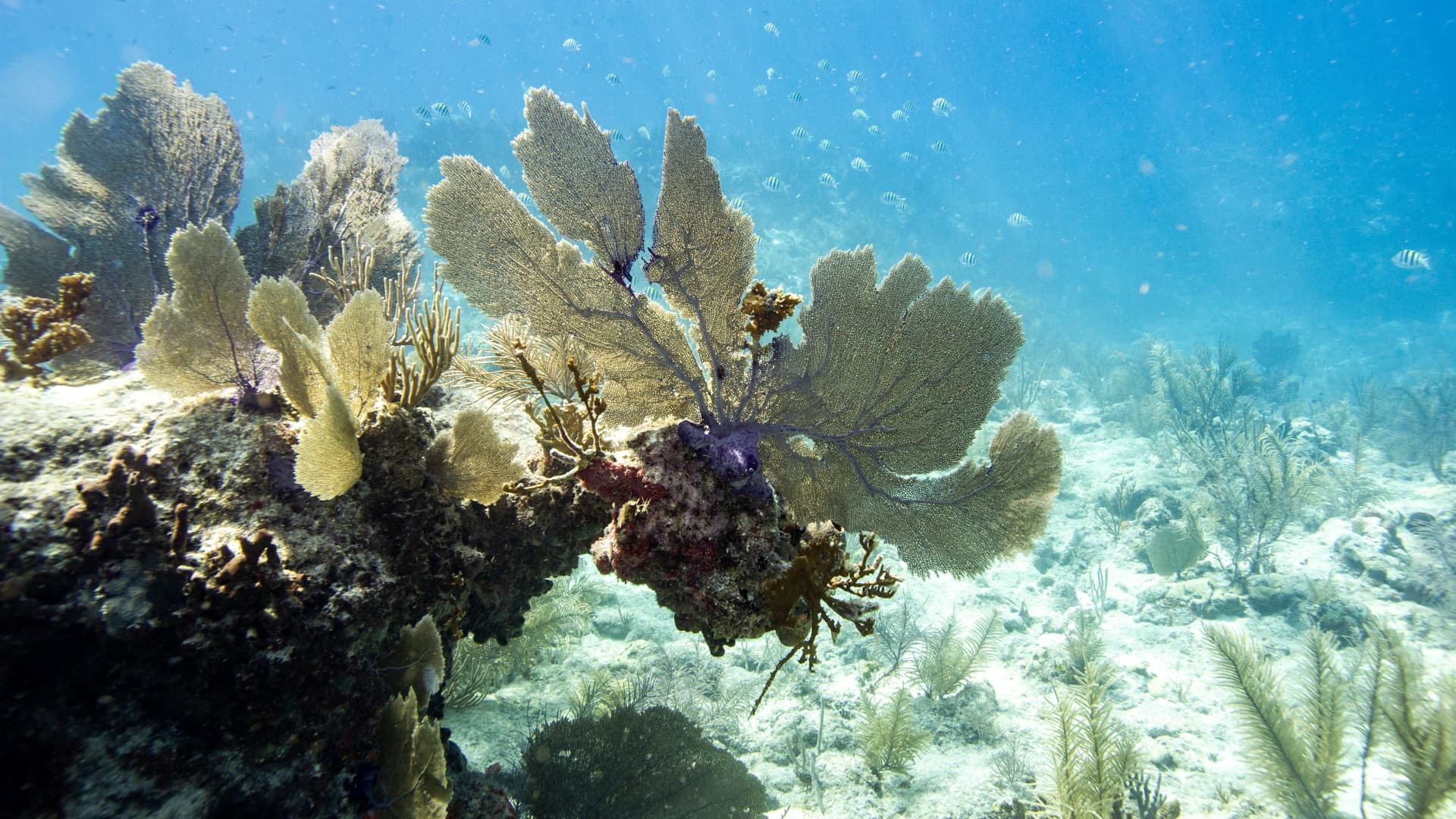Fish swim around a coral reef in Key West, Florida on July 14, 2023. The coral reef, the largest in the continental US, is considered a barrier reef and is around 350 miles (563.27 km) wide from the Dry Tortugas National Park to the St. Lucie Inlet in Martin County, Florida.
Joseph Prezioso | Afp | Getty Images
A buoy in Manatee Bay, Florida, showed an ocean temperature reading of over 101 degrees Fahrenheit on Monday night, the latest sign of record heat in the coastal waters.
The National Data Buoy Center, a division of the National Oceanic and Atmospheric Administration, recorded the temperature about five feet below the surface off South Florida’s East Coast at 10 p.m. ET.
It’s a critically hot reading for an ocean, and is especially concerning for the coral reefs in the area, which typically thrive at temperatures between 73 and 84 degrees, according to NOAA. And while it may be an all-time high, the comparison to other top readings is tricky because of how it was recorded.
The existing record for hottest ocean surface temperature is reportedly 99.7, which was reached in Kuwait Bay in the Persian Gulf. Jeff Berardelli, Florida WFLA News Channel 8’s chief meteorologist and climate specialist, said it’s unclear if the latest reading will be counted as a world record.
“These buoys that are inside Florida Bay — so that’s to the north of the Florida Keys and to the South Florida peninsula — they’re all in very shallow, murky, dark water,” Berardelli told CNBC. “Because it’s murky, and because it’s contaminated with sediment, the water temperatures are reflective of the fact that darker surfaces absorb more heat.”
Berardelli said the unique qualities of the area mean that “it’s not really comparable to most water measurements, which are in more clear water that may have a little bit more water movement — like tidal movement.”
View of a coral reef in Key West, Florida on July 14, 2023. The coral reef, the largest in the continental US, is considered a barrier reef and is around 350 miles (563.27 km) wide from the Dry Tortugas National Park to the St. Lucie Inlet in Martin County, Florida.
Joseph Prezioso | Afp | Getty Images
Complicating maters further, he said, “there are no official records that are kept on on water temperature.” A spokesperson for the World Meteorological Organization told CNBC that the group’s Weather and Climate Extremes archive doesn’t currently track sea surface temperatures.
Regardless, readings in South Florida have been extreme. Berardelli said two other sites in the Florida Keys had recent temperatures of 98 or higher, “which substantiates the fact that this sensor was likely either correct or it was off by a degree, but even if it’s off by a degree, it’s still close to a world record.”
The heat, which has penetrated Florida’s ocean waters for the past several weeks, presents major environmental concerns, said Phanor Montoya Maya, a marine biologist and the restoration program manager for the non-profit Coral Restoration Foundation.
“If water temperatures remain above 84 Fahrenheit for a significant period, corals will begin to experience stress and will start to bleach,” robbing them of nutrition they need to survive, Maya said in an emailed statement.
While corals can recover from bleaching, for that to happen they need ocean temperatures to return to normal levels.
“Water temperatures are now so elevated that it is likely becoming an existential threat for even the hardiest of corals on Florida’s Coral Reef,” Maya said. “Unfortunately, the water is now so hot that we are seeing some corals die as a result of heat stress.”
WATCH: The $52.6 billion plan to save the NYC region from climate change
This story originally appeared on CNBC

